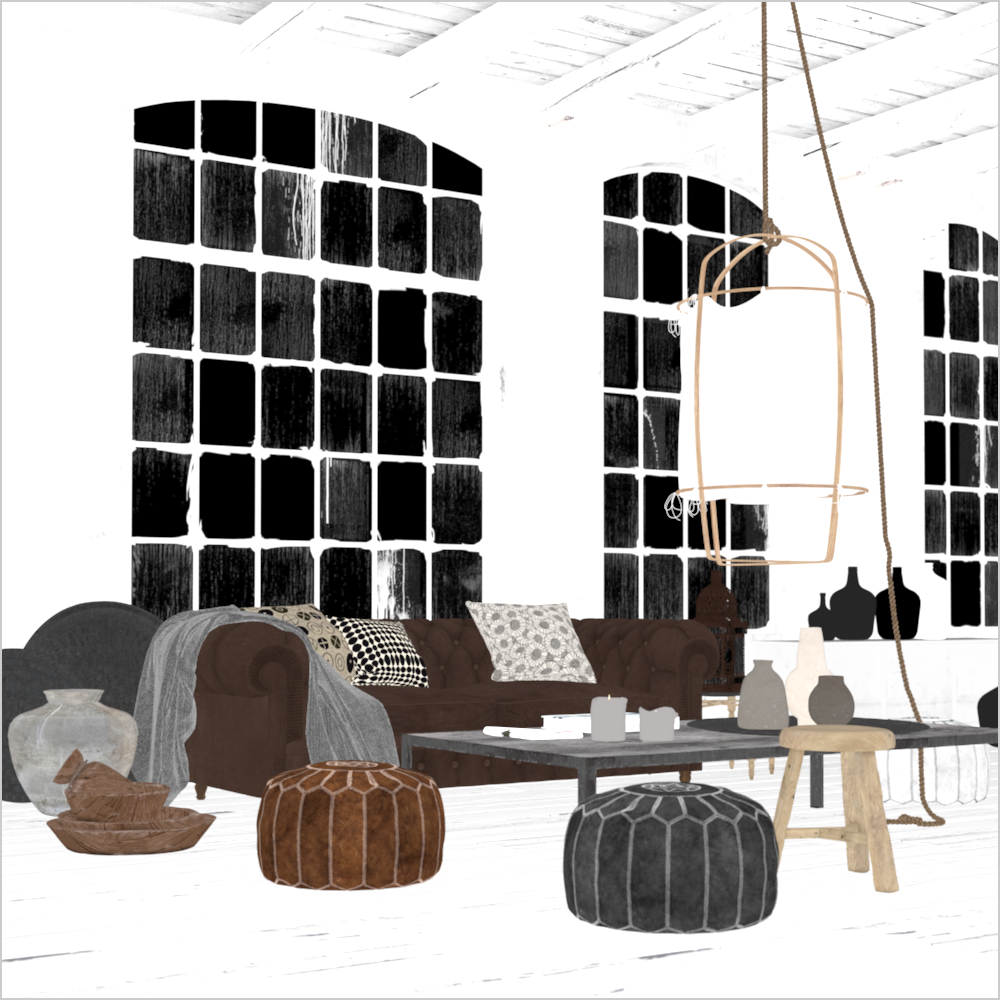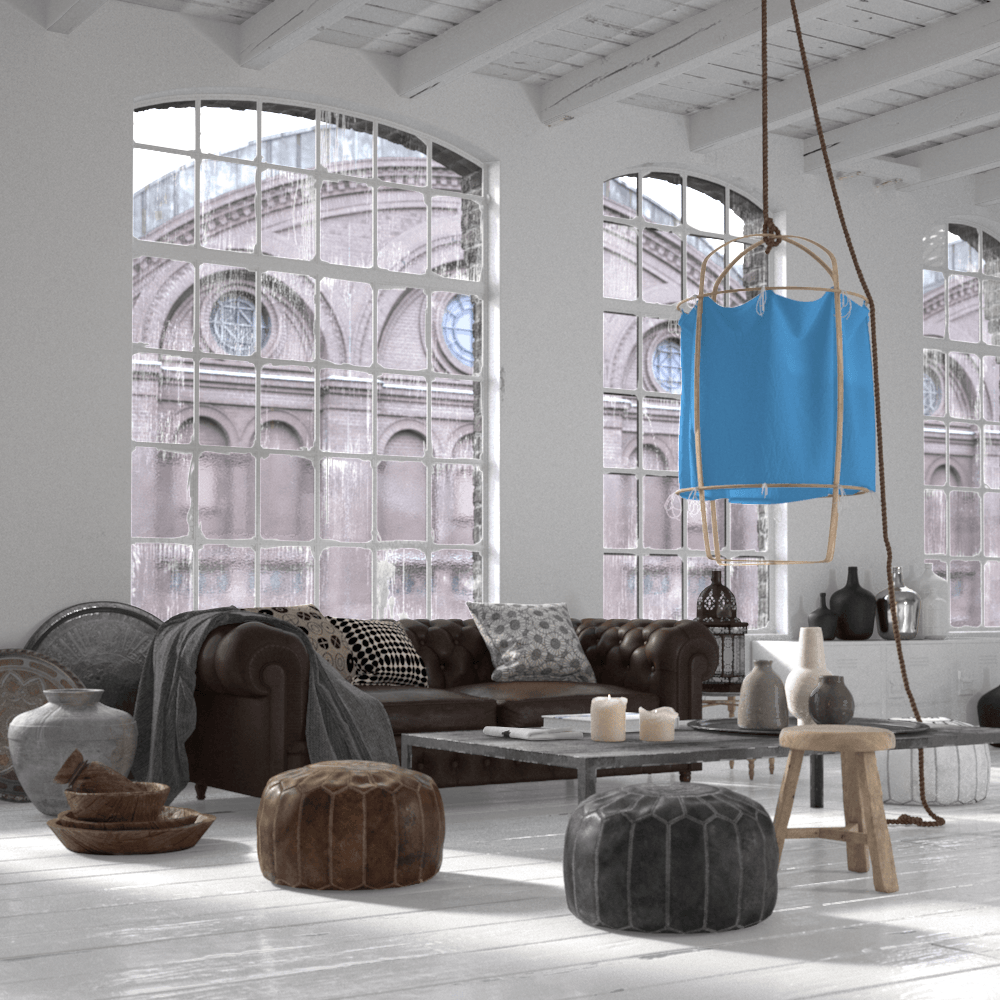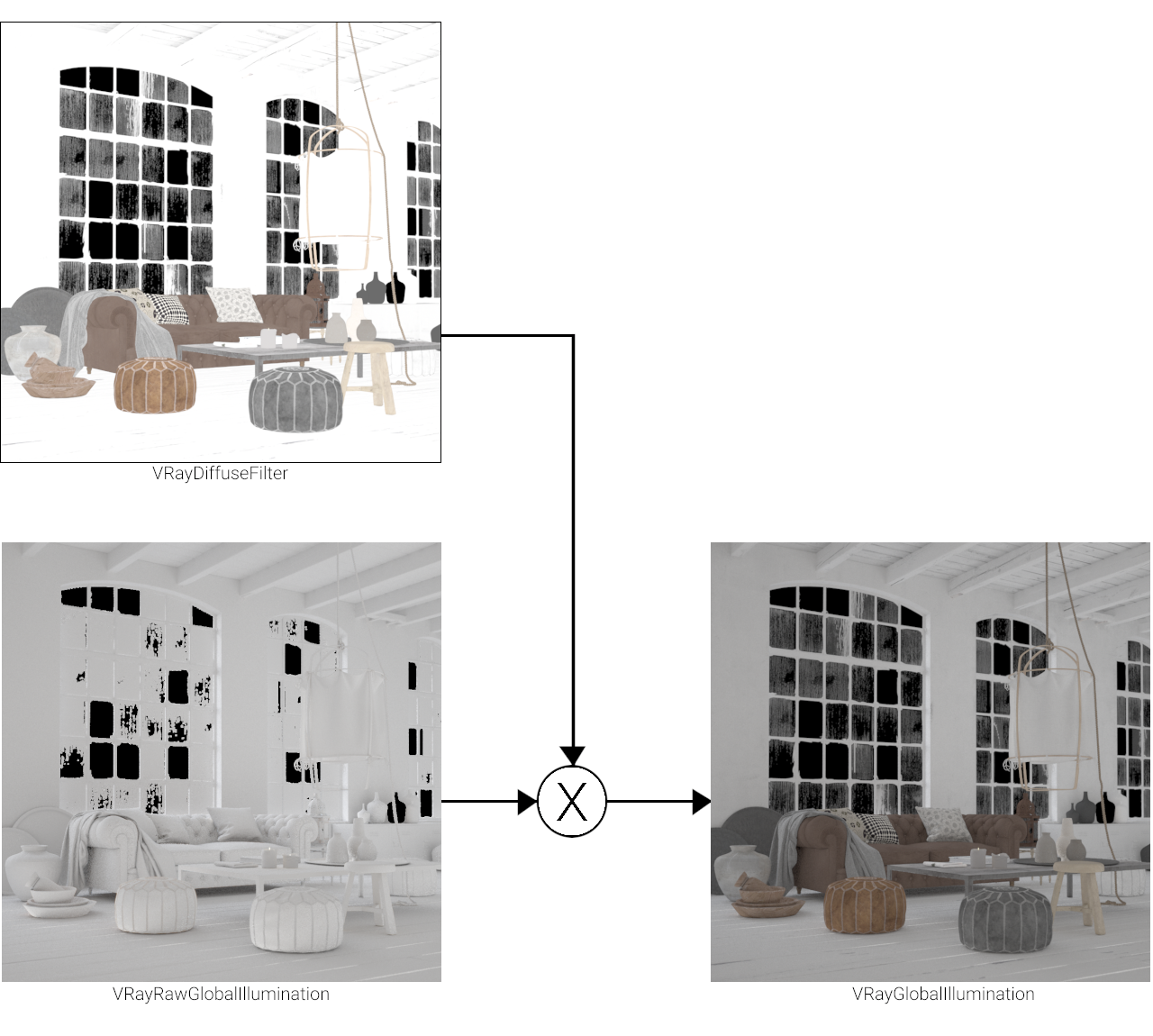VRayDiffuseFilter
This page gives information about t he Diffuse Filter Render Element, one of the basic render elements used to form many other render elements.
Overview
The Diffuse Filter Render Element shows the colors and textures used in materials, flatly applied to objects with no lighting information. The colors are the actual colors set in the material definition, and each texture appears as it does in the texture (file) itself. There are no highlights or shadows, and any background image is not included.
Other render elements that include colors from materials are said to include the diffuse contribution or the diffuse component of the rendered scene. The Diffuse Filter Render Element contributes this diffuse component; any render element that includes this diffuse component is a combination of VRayDiffuseFilter and other render element(s).
Note that the Diffuse Filter Render Element is affected by reflection and refraction combined weight. 1
This render element is, by itself, useful for making overall adjustments and enhancements to colors and textures during compositing.

UI Path
||Render Setup window|| > Render Elements tab > Add button > VRayDiffuseFilter
Parameters
This render element is enabled through the Render Elements tab of the Render Setup window in 3ds Max and displays its parameters in a rollout at the bottom of the window:

vrayVFB – When enabled, the render element appears in the V-Ray Virtual Frame Buffer.
deep output – Specifies whether to include this render element in deep images.
multiplier – Sets the overall intensity of the render element, where 1.0 is the standard multiplier.
denoise – Specifies whether to denoise this render element.
Common Uses
The Diffuse Filter Render Element is useful for changing the appearance of many passes when it is combined with Raw render passes (like VRayRawGlobalIllumination, VRayRawLighting, etc.). In the example below, the Diffuse Filter is multiplied by the Raw Global Illumination Render Element to provide the Global Illumination element. In this way, color correction can be performed upon the raw pass without the actual diffuse colors being changed, making it possible to tint a pass in a realistic way without re-rendering.
The Diffuse Filter is a very useful render element due to the number of raw passes with which it can be combined, giving the ability to manipulate many areas of the render at the composite level. The Diffuse Filter pass can also be color-corrected on its own, as shown in the example below. In this case, a Multimatte Render Element was used in conjunction with the Diffuse Filter render element to isolate the dangling light and change its color from white to blue without also tinting its lighting or shadowing in any way.

Diffuse Filter Render Element

Diffuse Filter Render Element
with color correction on dangling light

Beauty Render Element

Resulting composite with Diffuse Filter Render Element
with color correction on dangling light
Underlying Compositing Formulas
VRayDiffuseFilter x VRayRawGlobalIllumination = VRayGlobalIllumination
VRayDiffuseFilter x VRayRawLighting = VRayLighting
VRayDiffuseFilter x VRayRawShadow = VRayShadow

Notes
1 - This means that r eflective objects with solid diffuse color appear differently according to the view angle. The actual diffuse color is displayed only if the VRayRawDiffuse Render Element is used.